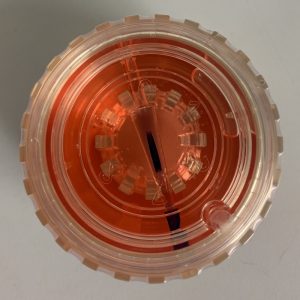
William Barry Lee MD, FACS
Using pre-stripped and pre-loaded tissue for Descemet’s membrane endothelial keratoplasty (DMEK) procedures results in more efficient surgery and may help to cut down on tissue wastage, according to William Barry Lee MD, FACS.
“DMEK is rising in popularity in the United States and elsewhere and initial studies indicate that pre-stripped, pre-stamped, pre-stained, pre-cut and pre-loaded (PPPPP) DMEK outcomes appear equivalent to surgeon-prepared tissue in the operating room. This approach improves surgeon efficiency, eliminates surgeon tissue wastage and reduces equipment costs,” he told delegates attending the European Society of Ophthalmology (SOE) meeting in Nice, France.
A recent literature review by Deng et al. found that with respect to visual recovery time, visual outcomes, and rejection rates, DMEK seems to be superior to Descemet’s stripping endothelial keratoplasty (DSEK) and seems to induce less refractive error with similar surgical risks and endothelial cell loss, noted Dr Lee.
“So the question now is how can we help surgeons in the OR perform DMEK surgery and make it easier? Using preloaded tissue enables surgeons to focus on the patient, increase their surgical efficiency and not worry about the risks of damaging endothelial tissue. It also enables surgical centres to avoid having to pay for expensive equipment such as trypan blue, trephine blades or anterior chamber equipment,” he said.
Dr Lee said that a growing number of eye banks in the United States are now able to provide pre-loaded DMEK tissue for transplantation.

Preloaded, prestained DMEK tissue with prestamped “S”
on the tissue in cold storage Optisol GS solution
“In Georgia we do over 2,000 corneal transplants a year and so our eye bank provider has become very accomplished at preparing these preloaded tissues. They also can pre-stamp the tissue for you, which is very useful as it is sometimes tricky in the OR to know if the tissue is upside down or reversed.
"Pre-marking it with a letter can help significantly and reduces the risk of a potential source of error in the surgery,” he said.
Clinical results with preloaded DMEK tissue are comparable to other DMEK techniques, said Dr Lee. The Devers Eye Institute group in Portland, Oregon, reported a re-bubble rate of 14.4%, no primary graft failures and endothelial cell loss of 30% in 111 eyes over six months.
Dr Lee’s own group in Georgia had a re-bubble rate of 23%, primary graft failure in 4% and endothelial cell loss of 34% after six months.
For surgeons starting off DMEK with pre-prepared tissue, Dr Lee advised selecting cases with a good view and avoiding those with severe corneal oedema. For pseudophakic patients, avoid those with blebs and tube shunts and avoid high myopes.
“Try to make the surgery as close to cataract surgery as you can, use a peripheral iridotomy inferiorally to help with pupillary block and use SF6 gas to decrease graft dislocations,” he concluded.
William Barry Lee: wblee@mac.com

 William Barry Lee MD, FACS
William Barry Lee MD, FACS Preloaded, prestained DMEK tissue with prestamped “S”
on the tissue in cold storage Optisol GS solution
Preloaded, prestained DMEK tissue with prestamped “S”
on the tissue in cold storage Optisol GS solution